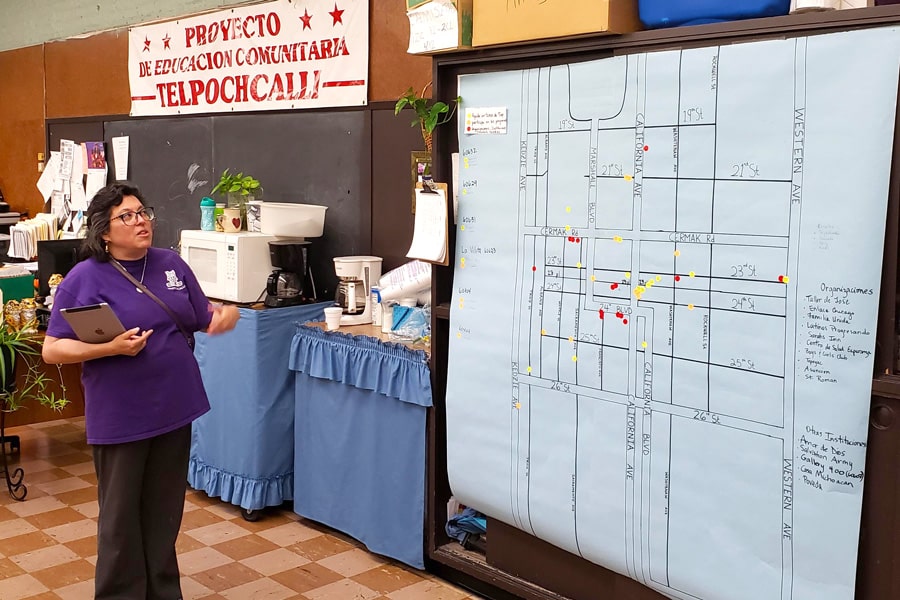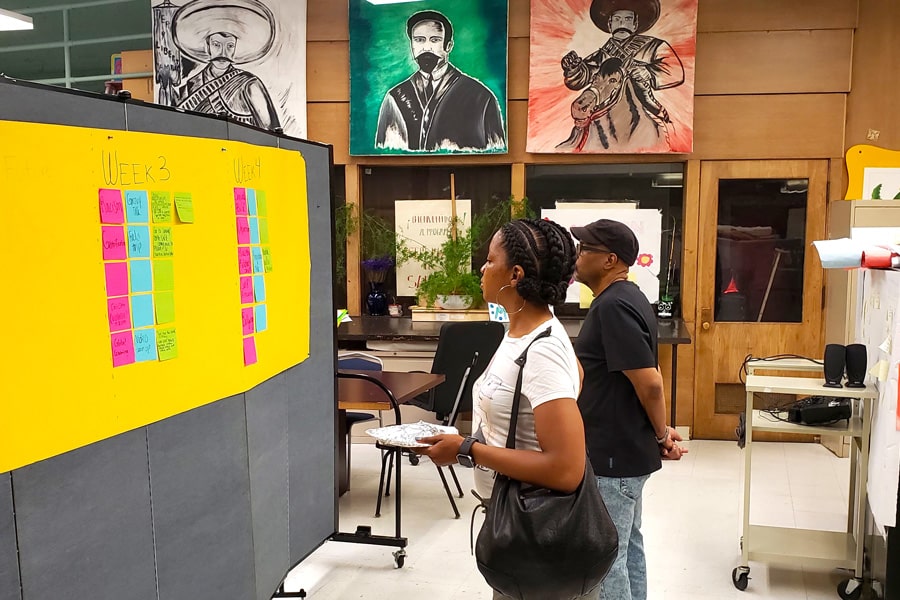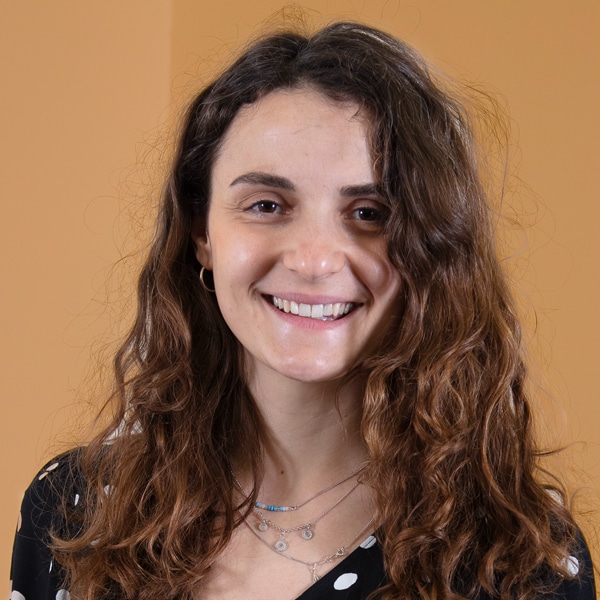Mapping a Community Vision in Sri Lanka
As part of her Goldin Global Fellowship, Sashikala Lakshman, from Sri Lanka, held her Community Visioning Summit in Rawathawatta East. This gathering was designed to identify and address the prevailing challenges faced by this area collaboratively.
Participating in the 2023 Goldin Global Fellowship made Sashikala, who believes in our collective responsibility to safeguard children's rights, a more skilled community worker. She emphasizes the lessons from the asset mapping exercise under the Fellowship.
Speaking to Goldin Institute, Sashikala highlighted the importance of the Fellowship lessons and the utilization of the GATHER platform in successfully implementing her event, which drew active participation from a diverse range of stakeholders, totaling approximately 50 attendees representing various categories.

A Sense of a Shared Purpose Among Diverse People
The Community Visioning Summit opened with a comprehensive overview of the Goldin Global Fellowship program and the Community Visioning Summit, elucidating the shared objectives and mission.
“In a spirit of inclusivity and community building, each attendee had the opportunity to introduce themselves, providing insights into their respective roles within society and their contributions to its betterment. This initial interaction fostered a sense of camaraderie and shared purpose among the diverse participants, laying a solid foundation for collaborative discussions and problem-solving throughout the summit.” Sashikala says.
She further elaborated on her goals to harness the assets and talents within her community to address the challenges effectively: “The primary objectives were to engage with community members, identify their most pressing issues, and collaboratively develop a concise three-month proposal for addressing these challenges while simultaneously constructing an asset map of the community.”
The summit was attended by a diverse group of community members including the Divisional Secretary of Moratuwa, Viharadhipathi Thero of the Rawathawatta temple, Moratuwa’s Probation Officer, the Principal of the Roman Catholic School, the Grama Niladari, the Chief Nursing Officer from the MoH Office, teachers and students from the Roman Catholic School, and as well as other community members. Additionally, respected elders from the community and staff at Sarvodaya, community-based development organization in Sri Lanka, contributed their valuable insights and expertise.

Asset Mapping - A Stronger Community Will for Change
Mapping community assets, a skill learned and discussed during the Fellowship weekly roundtables, proved to be a unique value during this event. Sashikala notes: “During the summit, the asset map that had been initially identified was presented, and participants were actively encouraged to contribute by identifying additional assets within their reach. This interactive approach enriched the asset map and sparked lively discussions among attendees.”
She further believes that because of the enthusiastic participation, the asset map and the summit demonstrated a shared commitment to community development and a genuine interest in identifying and leveraging the resources available to create a stronger, more resilient Sarvodaya and Rawathawatta East.
In addition to the initial asset maps identified before the summit, Sashikala shares how participants eagerly enriched the asset map. For instance, she brings valuable insights from crucial Sarvodaya representatives, enriching the asset map with various resources and services. “The manager of Sarvodaya's End Poverty Knowledge Center emphasized the significance of assets like Sarvodaya Central Library, SDGs Academy, End Poverty Knowledge Center, and Sarvodaya Institute of Higher Learning. These institutions were acknowledged for their pivotal roles in providing essential services to the community, fostering education, skill development, and knowledge dissemination.”
Some other additional assets identified after the summit are Vishva Niketan, Suwasetha Child Development Center, Roman Catholic School, Buddhist Temple, Sarvodaya Store, Probation Office, Grama Niladhari Office, and the engagement of community members, volunteers, children, and youth.

Stakeholders Appreciating the Initiative
At the summit, Sarvodaya's Vice President, Neetha Ariyaratne, highlighted the challenges experienced by low-income families and children due to the economic recession, including the alarming issue of parental drug addiction, which poses a significant threat to child safety in East Rawathawatta. She emphasized that Sarvodaya is actively involved in addressing these issues through orphanages and daycare centers and encouraged attendees to provide information regarding children in need of assistance.
The principal of the Roman Catholic school underscored the pivotal role of schools in identifying and addressing local problems, emphasizing that schools serve as microcosms of their communities, with children from diverse backgrounds and age groups. He advocated for securing the future of school children, expressing concern about the pervasive issue of drug-related challenges affecting their lives. Many disciplinary problems have been identified in their school, and the principal thinks that children and parents should be informed about this. He suggested that the parents in the Rawathawatta area should be made aware of these problems through entertainment programs.
Viharadhipathi Thero said that community support in solving these problems is minimal and that there should be more community participation in implementing programs. The members of Sarvodaya particularly pointed out that the involvement of children is significant in finding solutions to community problems because they are the ones who make decisions regarding the future of the country.

Infusing Positive Change Together
Sashikala emphasized the inclusivity of the event and the strength of a collaborative, participatory approach to addressing community issues. “Importantly, the summit was recognized as more than just another program; it was perceived as the starting point for concrete actions to tackle the challenges identified,” she adds.
Based on the reflections and feedback from participants, a network will be promptly established, including all attendees. “This platform will facilitate ongoing communication, ensuring that everyone remains informed about the program's future actions and allowing for continuous progress monitoring. This collaborative approach will be crucial in turning the identified challenges into actionable programs, driving positive change, and creating a brighter, more resilient future for all residents of the Rawathawatta East area.” She leaves us with a message of unity and hope by highlighting that people can enable change together.

Partnering with DePaul's Technology for Social Good Lab
One of the Goldin Institute’s core values is to build partnerships that are rooted in the power of communities working together to build solutions that can help generate local social change. The Chicago Peace Fellows have done this throughout the 2019 GATHER course, working to build community not only within their neighborhoods, but also among themselves and with civic partners throughout Chicago.
As part of the GATHER course, the Chicago Peace Fellows generated Asset Maps of their neighborhoods, asking friends and neighbors what they considered “assets” in their communities. After coming together as a cohort to discuss all the assets they identified in the 14 neighborhoods in which they work, a larger discussion was initiated around a “Living Asset Map” that could be city-wide, connecting grassroots leaders and nonprofits throughout the city with each other and like-minded organizations as well as other institutions and public leaders.

To move this conversation forward, the Goldin Institute has partnered with Dr. Sheena Erete at DePaul University's Technology for Social Good Lab to research and prototype a digital version of a shared asset map of the 19 Community Areas designated for grants by the Chicago Fund for Safe and Peaceful Communities. Three undergraduate students sponsored by DePaul’s Steans Center will be joined by three graduate students to design an interface that supports asset-mapping by Chicago grassroots leaders and their communities.
The undergraduate students from the Department of Geography will use their expanding technical skills in digital map-making, incorporating data from the city as well as from the University of Chicago Crime Lab and the Metropolitan Planning Council to create base maps for each area before digitally adding the assets identified by the Peace Fellows during their progress through the GATHER course.

The three graduate students will work with the Technology for Social Good Research and Design Lab, where Dr. Erete is the director, to engage community organizations across Chicago in interviews and design workshops, enhancing the base maps created by their undergraduate teammates as a prototype an interactive digital tool that can connect grassroots leaders, increase their collaboration, and act as a citywide tool for peace building. Their work will begin this semester and stretch into summer 2020.
“We are excited to collaborate with the Goldin Institute because the Chicago Peace Fellows' work is rooted in their communities and leverages local assets, which we believe is the only way to grow and sustain healthy communities.” -- Jessa Dickinson, doctoral candidate, DePaul University.
During asset mapping workshops held by the Goldin Institute for the Chicago Peace Fellows, the Fellows identified layers not typically found on traditional asset maps. They became specifically interested in mapping less visible, but equally valuable, assets such as the tight networks of friends from demolished public housing buildings who continue to meet for annual reunions near the sites of their former buildings even though they have all been relocated to other neighborhoods, or the impact that a block leader might have on a neighborhood, or physical spaces like closed schools that are not currently in use but could easily be turned into space for after school programs, meetings of community organization, or partnership opportunities.

Encouraged by the relationships that they have found with institutional leaders such as the Chicago Park District and the University of Chicago Trauma Center, the Fellows view this digital map as another item in their expanding toolbox to prevent violence, build peace in their neighborhoods, and make the entire city safer.
Key features of the new digital map’s design will be the ability to capture non-physical assets that exist in each of our communities, a user-friendly interface for grassroots leaders, and public access to add to the collective asset map of Chicago.
Peace Fellows Visit Telpochcalli in Little Village
On Friday, June 14, Chicago Peace Fellow Maria Velazquez invited her peers to the Telpochcalli Elementary School, an institution in the Little Village neighborhood that the community organization she leads, called the Telpochcalli Community Education Project, helped to create.
Maria hosted a street festival for members of the community to enjoy time together to start the weekend. The event featured a youth band and stoneware made by students of the school. The festival featured an all-youth band and food provided by local residents. The tortillas were hand-made and the aguas frescas (juice) were freshly squeezed. Around 100 members of the community sang and danced to enjoy the breezy spring evening.

According to their website, “Telpochcalli (Nahuatl for "house of youth") is a small school dedicated to integrating the Mexican arts and culture into an innovative academic and social experience and development of fully bilingual/biliterate students in English and Spanish. The school is comprised of students, teachers, parents and artists who aspire to nurture an understanding and appreciation of the self, family, community and world.”

Maria, a Chicago Peace Fellow, has been the executive director of the Telpochcalli Community Education Project for over three years. She started out as a volunteer at the school and when the position of executive director opened up, she was reluctant to apply at first. Maria can be shy but she is very loving and compassionate and works really hard to take care of the people she serves. She explained, “I do this work to help people. I really like to see people happy.”

Maria gave other Peace Fellows a tour of the school and their community space. She showed her “living” asset map where she encourages parents and volunteers to add what they see as assets in the community to the map. She noted that it helps people see the value of their community and people really like doing it. Maria talked about her summer program with teens that is completely led by the teens. This summer, they are focusing on health and how they can have an impact.
“It took some time to get them going [in reference to the teen council], but now they are leading it and we are now working to get younger people involved so that they can learn how to lead earlier".
The Telpochcalli Community Education Project’s roots go back to 1998, when a group of parents in the Little Village neighborhood got together to advocate for better educational facilities. Just as it is now, Little Village’s population was growing fast with new immigrants as well as many young families, and the parents were upset by the failure of the Chicago Public Schools to fulfill a promise to build a high school in the neighborhood.
Many parents participated in a sit-in and hunger strike that got public attention and ultimately, a new administration at CPS agreed to build the Little Village/Lawndale High School. Under Maria’s leadership, the Telpochcalli Community Education Project has continued to be a strong advocate for Little Village, recently stopping a merger of the Telpochcalli Elementary School, which is already overcrowded, with a high school in the area.
The Chicago Peace Fellows will be active all summer with events and knowledge sharing. Stay tuned for more articles and opportunities to join us.



